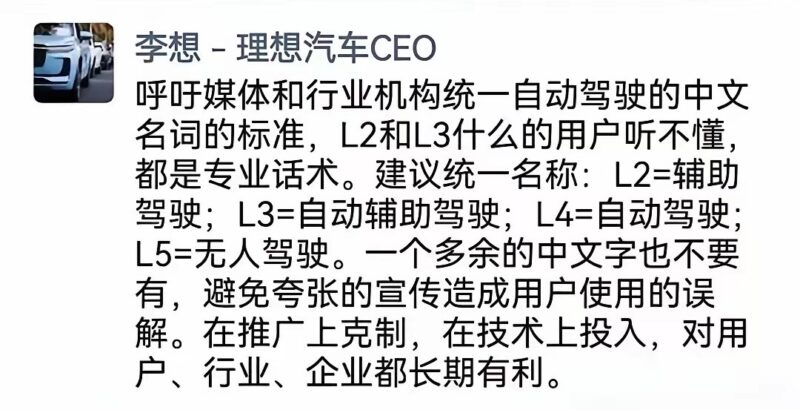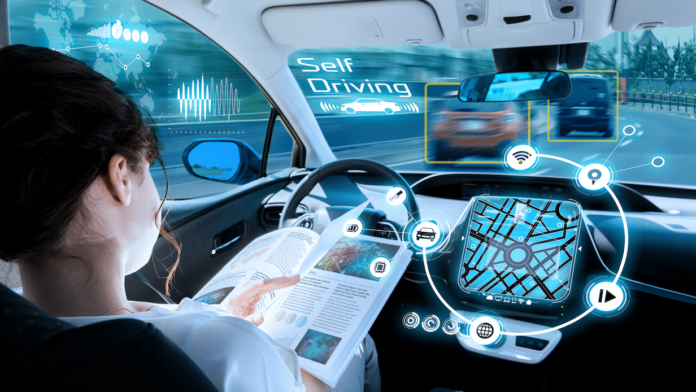Li Xiang, founder of Li Auto, has called for standardized Chinese terminology for autonomous driving levels, warning that current marketing practices confuse consumers about what their vehicles can do.

“I urge media and industry organizations to standardize terminology for autonomous driving,” Li posted on social media. “Terms like L2 and L3 are incomprehensible to users—just technical jargon.”
Li proposed a simplified naming convention: “L2 = Driving Assistance; L3 = Automatic Driving Assistance; L4 = Autonomous Driving; L5 = Driverless Driving,” emphasizing that “not a single extra character should be added” to avoid exaggerated claims that could mislead users.
“Being restrained in promotion while investing in technology benefits users, the industry, and companies in the long run,” Li added.
The intervention comes amid growing concerns that marketing hyperbole around autonomous driving capabilities contributes to accidents as drivers overestimate their vehicles’ abilities. Several high-profile crashes have occurred when drivers mistakenly believed their cars could drive themselves, highlighting the disconnect between marketing claims and technological reality.
The autonomous driving classification system, which is widely adopted internationally, was established by the Society of Automotive Engineers (SAE) and ranges from L0 to L5. China’s “Automobile Driving Automation Classification” standard references SAE J3016’s framework, with the classifications primarily aligned.
L2 (Combined Driving Assistance) systems can control lateral and longitudinal vehicle movement under specific operating conditions, such as maintaining lanes and safe highway distances. However, drivers must remain vigilant and ready to take control.
L3 (Conditional Autonomous Driving) systems can handle all dynamic driving tasks under specific conditions. Vehicles can drive automatically in certain environments, like highways, but drivers must be prepared to intervene when the system requests it.
L4 (High-Level Autonomous Driving) systems can complete all driving tasks and perform driving takeovers under designed operating conditions, continuously monitoring traffic conditions to achieve all driving objectives. Driver monitoring is generally unnecessary, though human intervention may still be required in unique scenarios.
L5 (Complete Autonomous Driving) systems can perform all dynamic driving tasks under any conditions without the “designed operating conditions” limitation. Vehicles can drive autonomously in any scenario without human driver participation—passengers only need to provide a destination or navigation information.
Industry observers note that the gap between marketing language and technical capabilities has become dangerously broad. Due to misleading terminology used in promotional materials, consumers often believe their L2 systems have L4 or L5 capabilities. Li’s proposal aims to clarify a situation where linguistic ambiguity has real safety implications.


